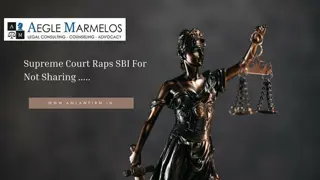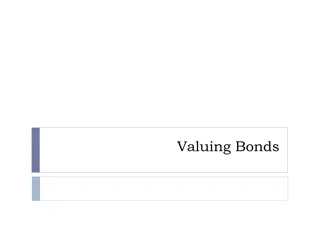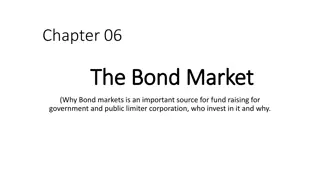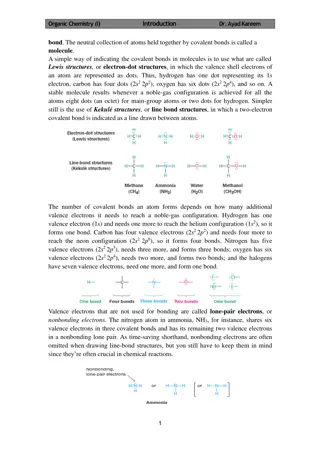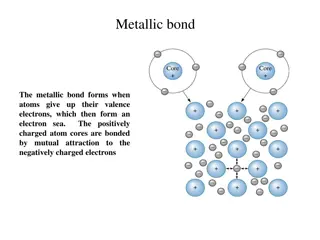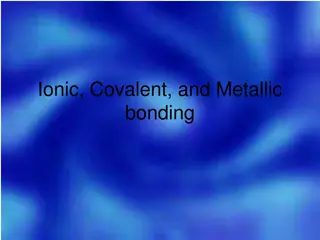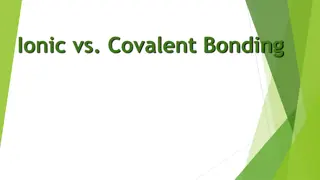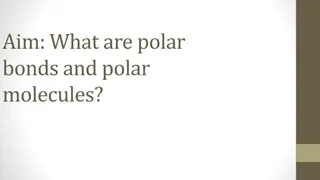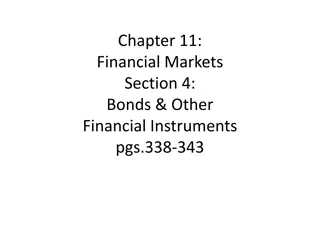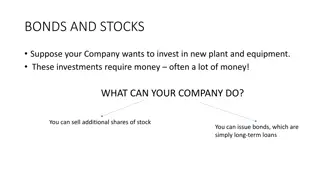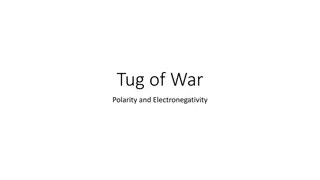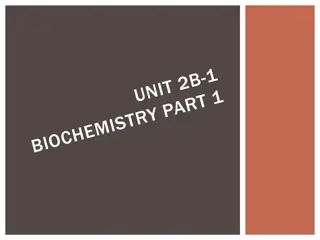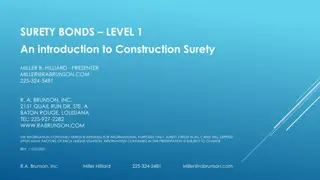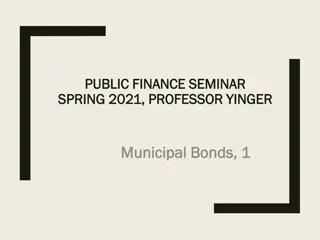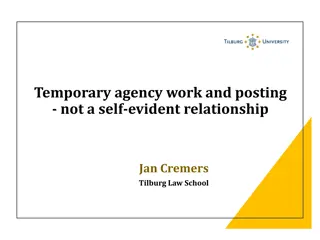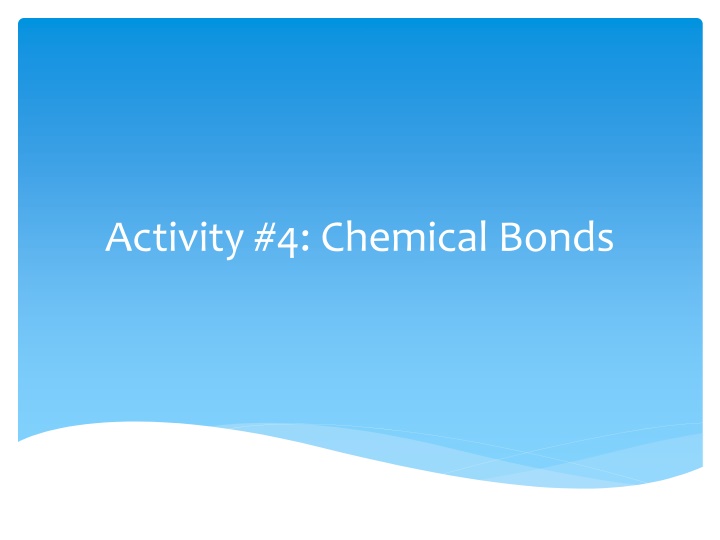
Chemical Bonds and Valence Electrons
Explore the concepts of chemical bonds, valence electrons, and reactivity in atoms through activities and vocabulary. Learn about covalent bonds, octet rule, stable vs. reactive atoms, and types of chemical bonds like ionic and covalent. Understand how valence electrons play a crucial role in forming molecules and determining the stability of compounds.
Download Presentation

Please find below an Image/Link to download the presentation.
The content on the website is provided AS IS for your information and personal use only. It may not be sold, licensed, or shared on other websites without obtaining consent from the author. If you encounter any issues during the download, it is possible that the publisher has removed the file from their server.
You are allowed to download the files provided on this website for personal or commercial use, subject to the condition that they are used lawfully. All files are the property of their respective owners.
The content on the website is provided AS IS for your information and personal use only. It may not be sold, licensed, or shared on other websites without obtaining consent from the author.
E N D
Presentation Transcript
Vocabulary Covalent bond Reactants Products Valence level Octet rule HONC Reactivity Chemical bond Stable/unreactive Unstable/reactive Charge Chemical equation Law of conservation of matter
Chemical Bonds Atoms in compounds are held together by chemical bonds Making bonds involves the electrons that surround each nucleus Electrons that are available to form bonds are called valence electrons
Valence Electrons Electrons of an atom are spread out in different layers around the nucleus to make an electron cloud Layers are called energy levels 2 electrons go in the first energy level 8 electrons can go in the second energy level and beyond (octet rule)
Valence Electrons If there are not 8 electrons for the outer level, these empty spots are called vacancies and some electrons are unpaired Unpaired electrons in the outer layer are the valence electrons Valence electrons can pair with those from other atoms to fill the vacancy Creates a molecule
Bohr Model vs. Lewis Dot Structure Bohr Model: shows all of the electrons in their energy levels Lewis Dot Structure: shows just the valence electrons in the outer energy level
Practice Element Carbon Bohr Lewis Dot Nitrogen
Reactive vs. Stable Reactivity of an atom is determined by the number of vacancies in its outer energy level If there are vacancies, the atom is reactive/unstable If there are no vacancies, the atom is nonreactive/stable If the vacancies are filled due to bonding, the molecule is stable
Types of Chemical Bonds 1. ionic bonds 2. covalent bonds There are other types of bonds and interactions but they are not as strong
Ionic Bonds Formed when one or more electrons are transferred from one atom to another Atom that loses electrons becomes positively charged Atom that gains electrons has a negative charge These positively and negatively charged atoms are known as ions These oppositely charged ions have a strong attraction for each other, forming an ionic bond
Covalent Bonds Electrons are shared by atoms instead of transferred Moving electrons travel about the nuclei of both atoms, forming a covalent bond.
A covalent bond can be a Single Covalent Bond: atoms share 2 electrons (1 pair) Double Covalent Bond: atoms share 4 electrons (2 pairs) Triple Covalent Bond: atoms share 6 electrons (3 pairs)
HONC This is the number of bonds each of these can form! H O N C 1 2 3 4 Bonds between the most important biological atoms will be covalent Number of bonds each can make is important for the compounds that will be created using these atoms Hydrogen -can form 1 bond Oxygen- can form 2 bonds Nitrogen- can form 3 bonds Carbon- can form 4 bonds
Chemical Reactions Chemical Reactions:process that changes or transforms one set of chemicals into another set of chemicals Involves changes to the chemical bonds that join atoms in compounds Reactants:elements or compounds that enter into a chemical reaction Products:elements or compounds produced by a chemical reaction HINT: Reactants react to produce products! Bonds of the reactants are broken and new bonds form in the products
Chemical Equations What process is this equation for?Cellular Respiration Chemical Equation: a mathematical representation of a chemical reaction Shows the numbers and types of compounds involved 6O2 + C6H12O6 6CO2 + 6H2O + ___ ATP Products Reactants
Balancing Chemical Equations The Law of Conservation of Matter: matter (atoms and elements) in a chemical reaction cannot be created or destroyed Only the arrangement of the atoms is changed, NOT the number or types Both sides of a chemical equation must be balanced (have the same number of atoms)
Practice Are these equations balanced? C + 2H2 --> CH4 Yes No Na2SO4 + CaCl2 --> CaSO4 + NaCl No C2H6 + O2 --> CO2 + H2O 2Al2O3 --> 4Al + 3O2 Yes

